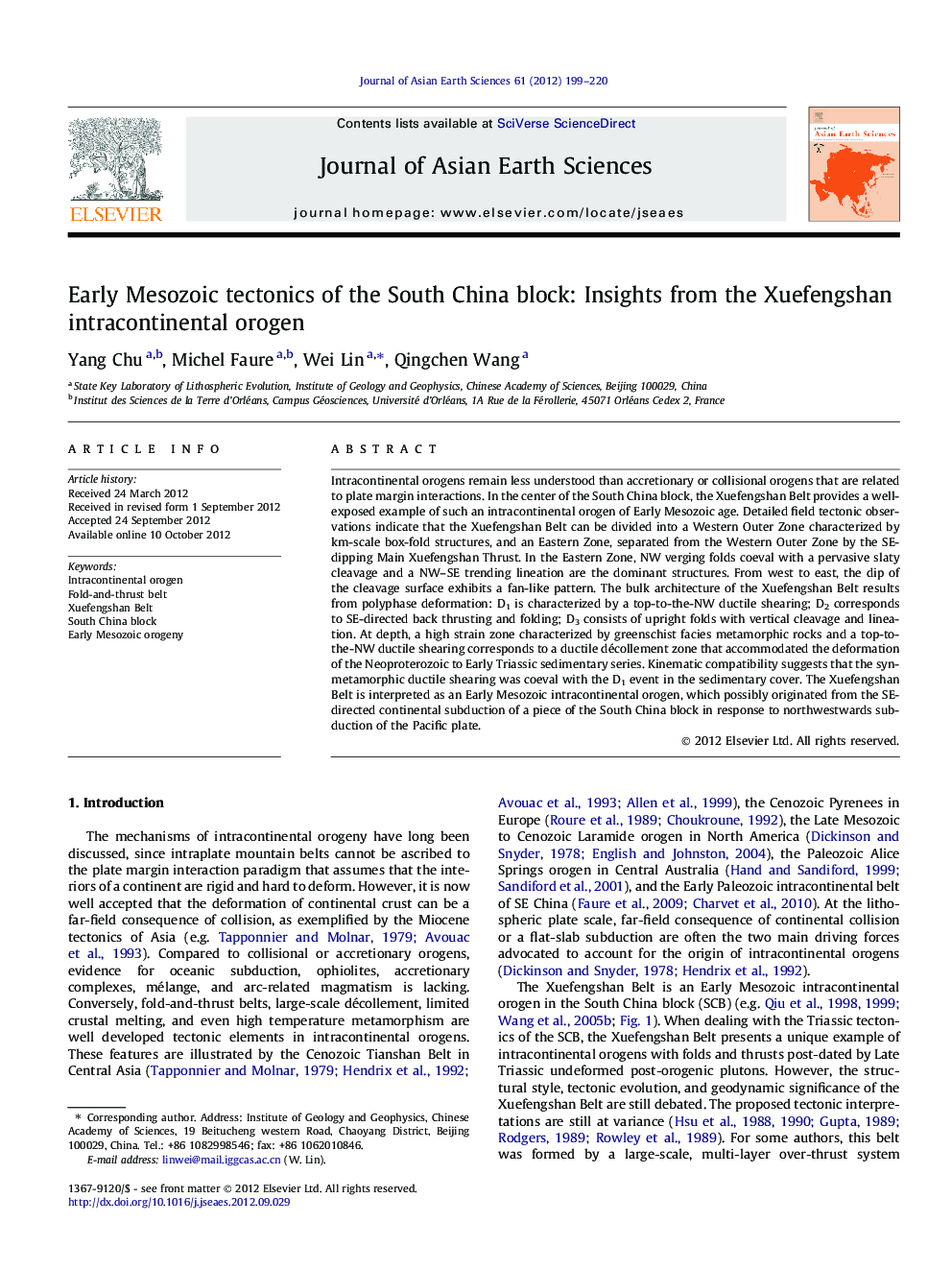| Article ID | Journal | Published Year | Pages | File Type |
|---|---|---|---|---|
| 4731156 | Journal of Asian Earth Sciences | 2012 | 22 Pages |
Intracontinental orogens remain less understood than accretionary or collisional orogens that are related to plate margin interactions. In the center of the South China block, the Xuefengshan Belt provides a well-exposed example of such an intracontinental orogen of Early Mesozoic age. Detailed field tectonic observations indicate that the Xuefengshan Belt can be divided into a Western Outer Zone characterized by km-scale box-fold structures, and an Eastern Zone, separated from the Western Outer Zone by the SE-dipping Main Xuefengshan Thrust. In the Eastern Zone, NW verging folds coeval with a pervasive slaty cleavage and a NW–SE trending lineation are the dominant structures. From west to east, the dip of the cleavage surface exhibits a fan-like pattern. The bulk architecture of the Xuefengshan Belt results from polyphase deformation: D1 is characterized by a top-to-the-NW ductile shearing; D2 corresponds to SE-directed back thrusting and folding; D3 consists of upright folds with vertical cleavage and lineation. At depth, a high strain zone characterized by greenschist facies metamorphic rocks and a top-to-the-NW ductile shearing corresponds to a ductile décollement zone that accommodated the deformation of the Neoproterozoic to Early Triassic sedimentary series. Kinematic compatibility suggests that the synmetamorphic ductile shearing was coeval with the D1 event in the sedimentary cover. The Xuefengshan Belt is interpreted as an Early Mesozoic intracontinental orogen, which possibly originated from the SE-directed continental subduction of a piece of the South China block in response to northwestwards subduction of the Pacific plate.
► The Xuefengshan Belt is an Early Mesozoic intracontinental orogen. ► This belt can be divided into a Western Outer Zone and an Eastern Zone. ► The bulk architecture of the whole belt results from a polyphase deformation. ► This orogen was originated as a far-field effect of the Paleo-Pacific subduction.
